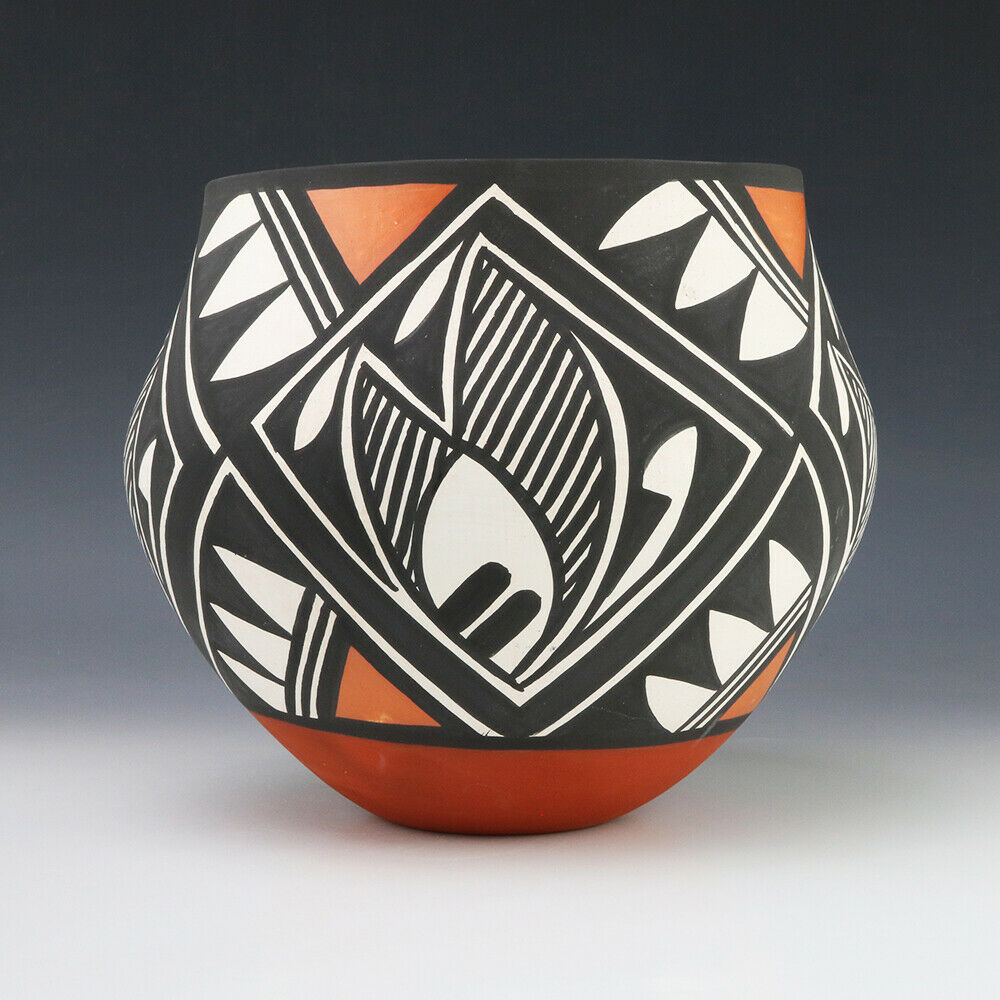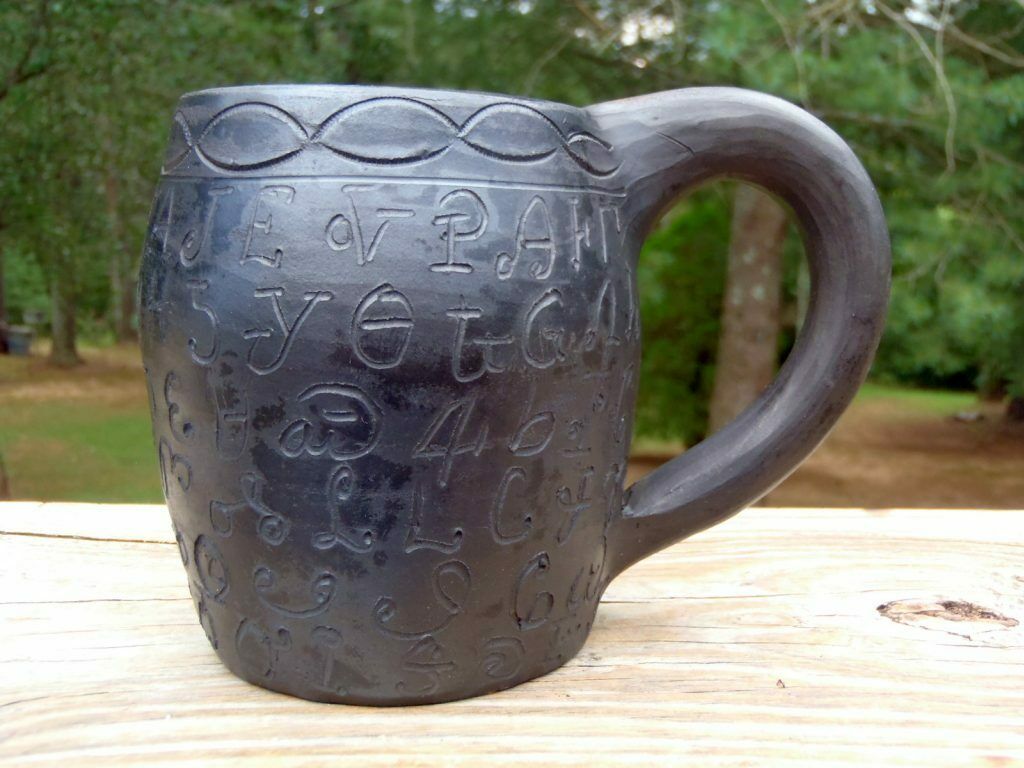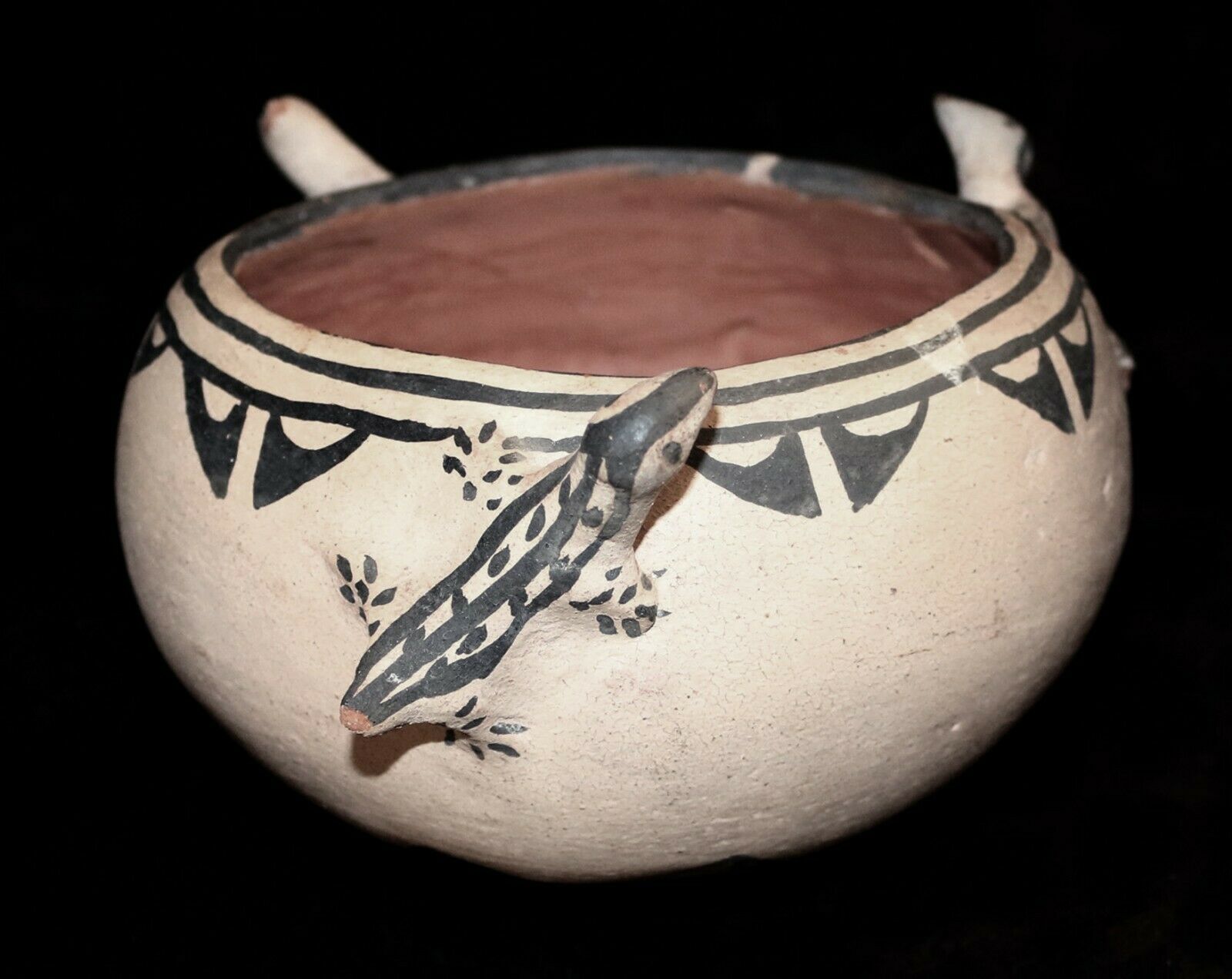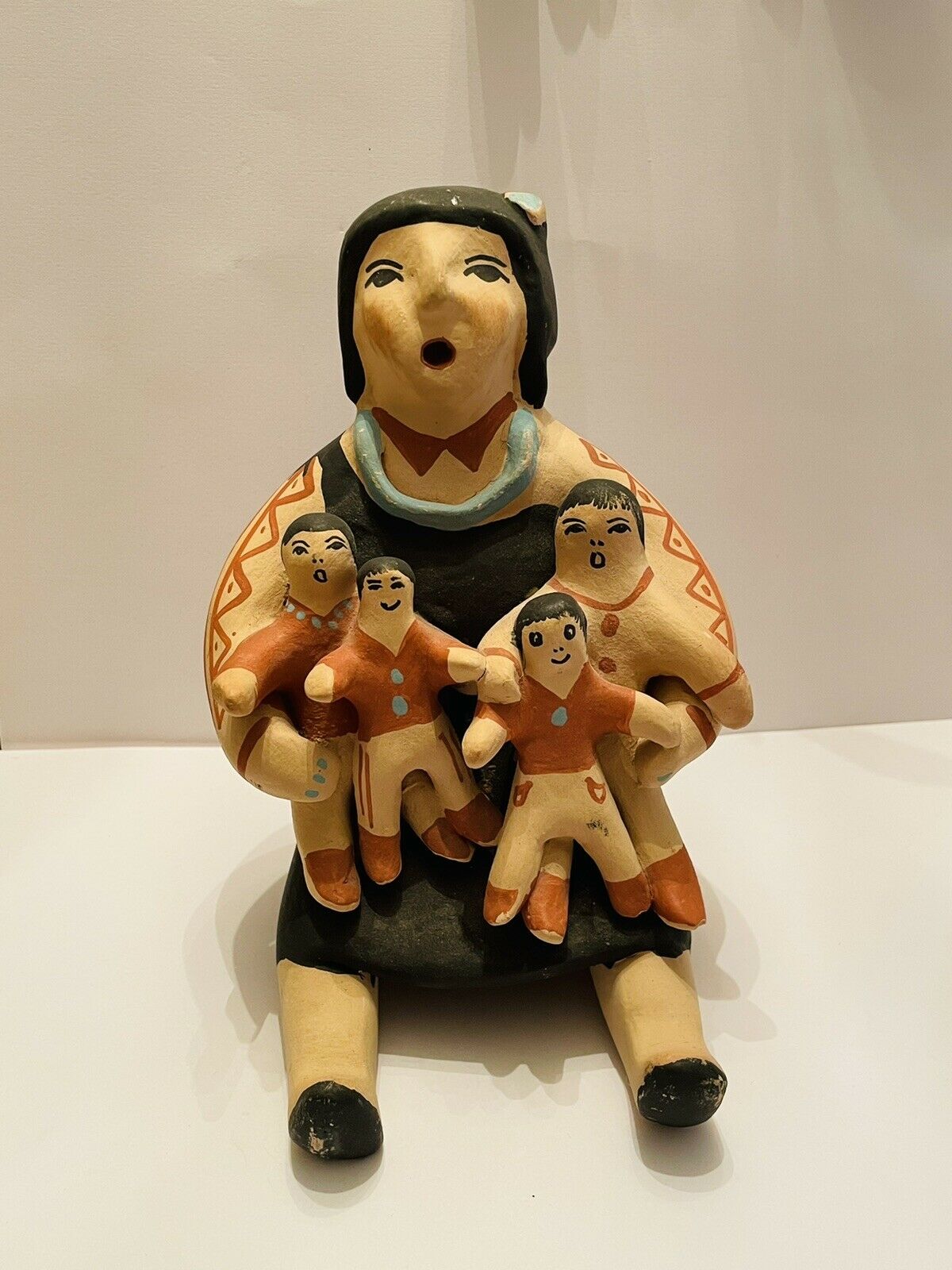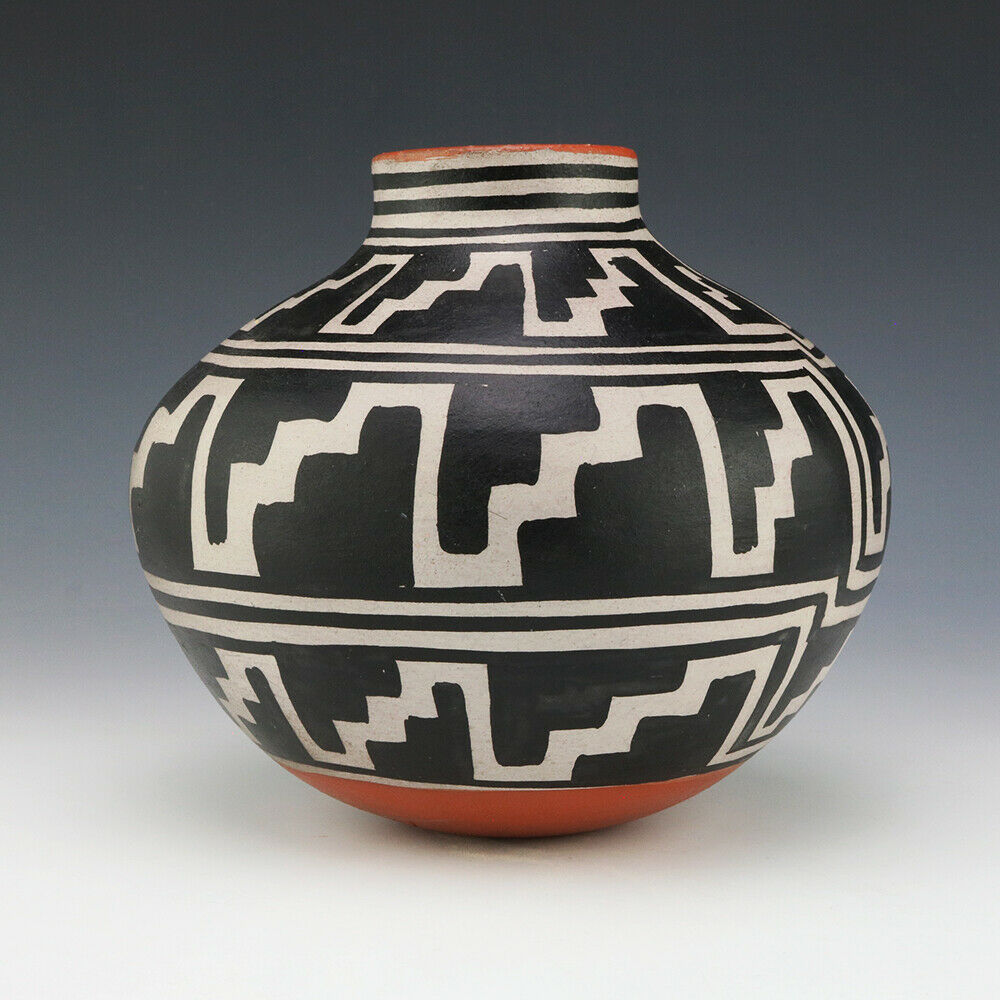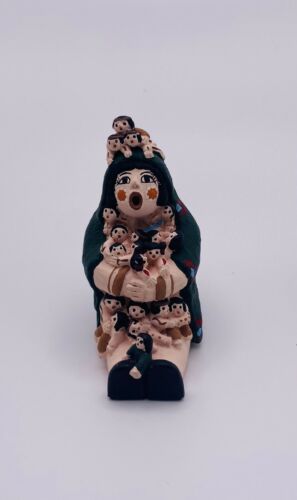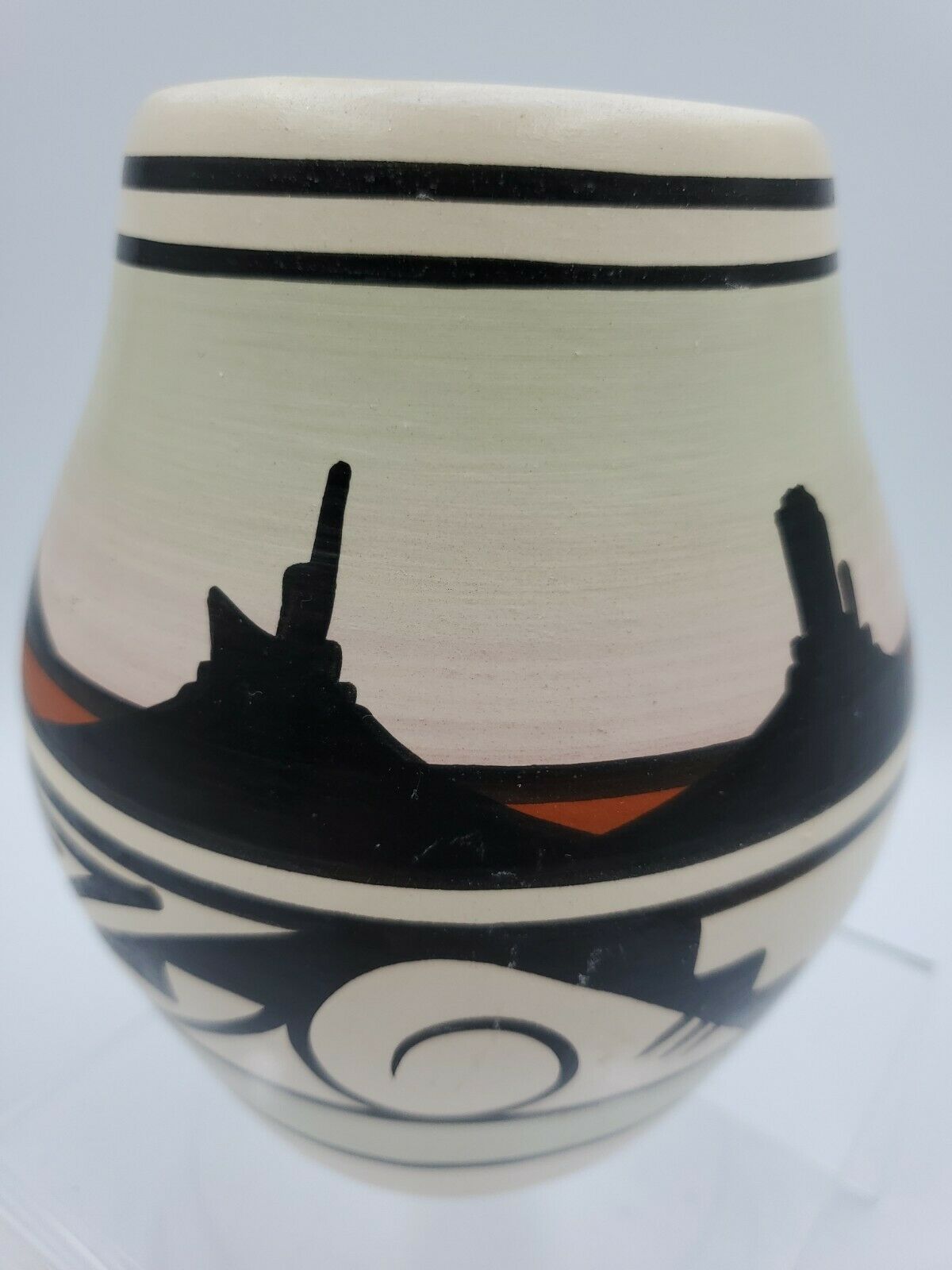-40%
Very Rare Potsuwi’i Incised Ware
$ 1045.44
- Description
- Size Guide
Description
Offered byAntique American Indian Art, llc.
--- AAIA --
Very Rare Potsuwi’i Incised Ware
5 3/4" at rim x 9"
Potsuwi’i Incised Ware Type Name: Potsuwi'i Incised - Plain
Period: 1500 A.D. - 1600 A.D.
Culture: Ancestral Pueblo: Greater Upper Rio Grande Valley
Branch: Northern Rio Grande
Tradition: Greater Tewa Basin (Northern Tewa)
Ware: Northern Rio Grande Historic Plain Ware
First posted by C. Dean Wilson 2012
Potsuwi’i was described and defined by Mera (1932). This type is characterized by a very distinct combination of attributes noted for a minority of the utility ware from sites in dating to the late part of the Classic period sometime during the sixteenth century (Wilson and Lewis 2014). The spatial distribution of this type is also limited and mainly occurs in the Pajarito Plateau and Chama Valley.
Potsuwi'i Incised is represented by jars which are very thin relative to vessel size. Forms include distinct globular-shaped jars with rounded bottoms. Vessels tend to be thin and hard. Exterior surfaces are sometimes covered with a thin sparse micaceous slip. Exterior surfaces are dull gray tan. Pastes tend to be cream or tan. Temper consists of a fine tuff or ash similar that noted in biscuit ware types. Decorations consist of fine and deep incised lines (Gauthier 1987; Wendorf 1953). Designs are variable but often consist of combinations of parallel horizontal and vertical lines. Punctated decorations are sometimes represented. The rarity of descriptions and discussions of Potsuwi’i Incised may be the result of the limited area (the Pajarito Plateau and Chama Valley) and time (about A.D. 1500 to 1600) associated with production of this type.
The origin of pottery displaying the unique combination of attributes noted for Potsuwi’i Incised is difficult to determine. Based on the appearance of a number of innovations including the incised decorations and the concave base, Harlow (1972) notes that characteristics associated with this type may have been influenced by an influx of or influence from Plain groups from the east. The similarity of the decorations and polishing on sites from area in areas to the south also have led some to speculate about possible influence from the Chihuahua region to the south as reflected by Playas Red Incised (Wendorf 1953).
While Mera (1932) described this type as being ancestral to Tewa Polychrome, Harlow places it in the beginning of the distinctive Tewa Plain Ware tradition. He also assigned ceramics exhibiting characteristics similar those noted in Potsuwi’i Incised, but without incised decorations to Potsuwi’i Gray or Plain which was thought to have developed into Kapo Gray (Harlow 1973).
References:
Gauthier, Rory
1987 Ceramics. In Howari: Excavation at a Northern Rio Grande Biscuit Ware Site, by D Fallon and K Wening,pp 35-90. Museum of New Mexico, Laboratory of Anthropology Notes 261b, Santa Fe.
Harlow, Francis H.
1973 Matte Paint Pottery of the Tewa, Keres, and Zuni Pueblos. Museum of New Mexico, Santa Fe.
Mera, H. P.
1932 Wares Ancestral to Tewa Polychrome. Laboratory of Anthropology Technical Series Bulletin No. 4. Museum of New Mexico Santa Fe.
Wendorf, Fred
1953 Salvage Archaeology in the Chama Valley, New Mexico. School of American Research Monograph No.17, Santa Fe.
Wilson, C. Dean and Candace Lewis
2014 Introduction to Mera’s “Wares Ancestral to Tewa Polychrome”. In Since Mera: The Original Eleven Bulletins, With Essays and Opinions Derived from Recent Research, edited by E. J Brown, R. N. Wiseman and Rory P. Gauthier, pp 89-93. Archaeological Society of New Mexico, Albuquerque.
---
210118-30
Welcome to Matt Wood's Antique American Indian Art, llc. (AAIA) eBay Listings.
As the nation’s leading gallery of Antique North American Indian Art and Artifacts, we invite you to consider the beautiful art and artifacts that we list on eBay with full confidence in the authenticity and legality of the item, in the accuracy of the listing, and in the professionalism that we demonstrate in processing each transaction.
In business for over 45 years, Matt Wood and Len Wood are founding members of ATADA (Antique Tribal Arts and Dealers Association), and we provide you, the collector, a unique opportunity to buy directly from our gallery inventory via eBay. We offer Certificates of Authenticity, a 7-day home inspection period allowing returns for full refunds (less shipping/insurance costs), and a lifetime trade-back policy (call for details). We are confident that you will be pleased with the value, service and peace-of-mind that our gallery can offer you. Thank you for looking!
SHIPMENT
We package all items for shipment in the utmost professional manner, and all shipments are fully insured. Please read our Store Policies for all of our shipping information.
PLEASE FOLLOW US on eBay
-
If you hit the FOLLOW THIS SELLER link on the top right of this listing under the Seller Information button, you will be able to get the early notices of our new additions and sales. We will be adding lots of quality Antique American Indian Art over the next few months.





